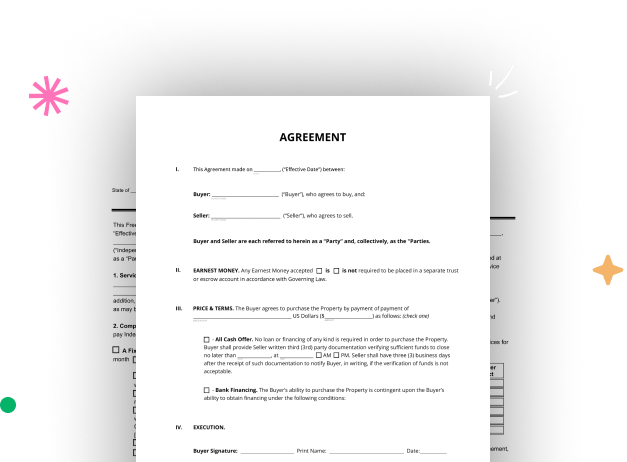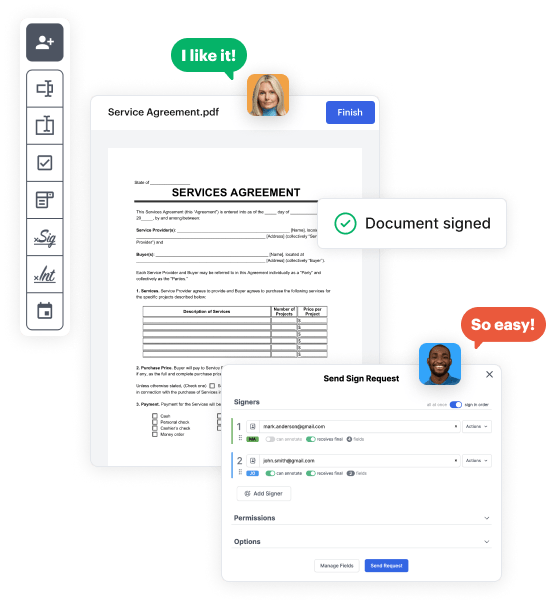

Visit the DocHub website and sign up for the free trial. This provides access to every feature you’ll need to build your Eviction with no upfront cost.
Sign in to your DocHub account and go to the dashboard.
Click New Document in your dashboard, and choose Create Blank Document to create your Eviction from the ground up.
Insert various fields such as text boxes, radio buttons, icons, signatures, etc. Organize these fields to suit the layout of your form and assign them to recipients if needed.
Rearrange your form in seconds by adding, repositioning, deleting, or combining pages with just a few clicks.
Transform your freshly designed form into a template if you need to send many copies of the same document repeatedly.
Send the form via email, share a public link, or even publish it online if you want to collect responses from a broader audience.